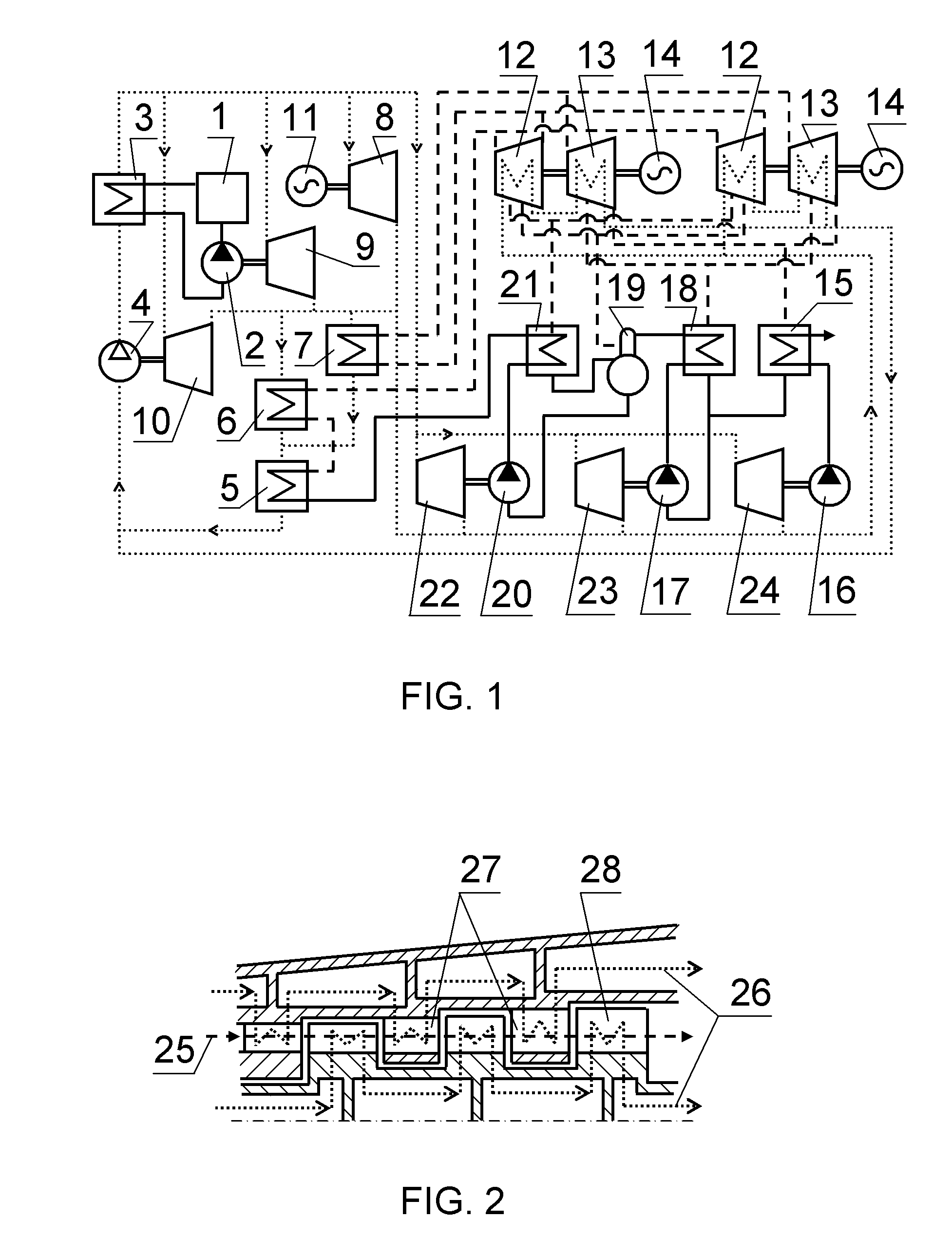Nuclear Power Plant and a Steam Turbine
a nuclear power plant and steam turbine technology, applied in steam engine plants, reactor fuel elements, lighting and heating apparatus, etc., can solve the problems of high chemical activity, high cost of technical measures, and the inability to restore the full capacity of the plant for a short time, so as to facilitate the operation and facilitate the adjustment of capacity. , the effect of quick loading
- Summary
- Abstract
- Description
- Claims
- Application Information
AI Technical Summary
Benefits of technology
Problems solved by technology
Method used
Image
Examples
Embodiment Construction
[0028]The described group of inventions can be carried out as follows.
[0029]In a nuclear reactor (1) liquid metal, for example lead, heats up to temperature 830 K. In not-mixing heat exchanger (3) > this metal is cooled up to 670 K and again is moved into a reactor (1) by pump (2). Heat of this metal in heat exchanger (3) > heats the gas, for example, nitrogen, from temperature 620 K up to 790 K. Heated nitrogen goes into gas turbine unit with the closed cycle without heat recovery, and after use in gas turbines (8, 9, 10, 22, 23, 24) nitrogen gets temperature 580 K. In not-mixing heat exchangers (5, 6, 7) > nitrogen is cooled up to 460 K, giving heat to the water evaporated at pressure 5.5 MPa. The cooled nitrogen is compressed by compressor (4) up to a degree of compression p=3, corresponding to temperature 620 K, and moves into heat exchanger (3) >.
[0030]Produced in heat exchangers (5, 6) “gas-water” steam with pressure 5.5 MPa and temperature 540 K moves into steam turbines (ste...
PUM
 Login to View More
Login to View More Abstract
Description
Claims
Application Information
 Login to View More
Login to View More - R&D
- Intellectual Property
- Life Sciences
- Materials
- Tech Scout
- Unparalleled Data Quality
- Higher Quality Content
- 60% Fewer Hallucinations
Browse by: Latest US Patents, China's latest patents, Technical Efficacy Thesaurus, Application Domain, Technology Topic, Popular Technical Reports.
© 2025 PatSnap. All rights reserved.Legal|Privacy policy|Modern Slavery Act Transparency Statement|Sitemap|About US| Contact US: help@patsnap.com


